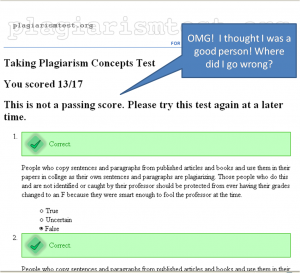 Read this book if you want to know what frightens parents about kids using the internet.
Read this book if you want to know what frightens parents about kids using the internet.
Michael Carr-Gregg is a warm and charismatic speaker in person, and his writing in this book is very readable, aimed squarely at concerned parents. I love the cartoons by Ron Tandberg. Forewords provided by Senior Constable Susan McLean and Dr Tim Hawkes emphasise the seriousness of the topic. However, despite a warm tone, the overall message of this book is pessimistic and the case studies are alarming.

In this book, the internet is “a unique parenting problem”. There is only glancing mention of the important differences described by Marc Prensky between children who seize the riches of the emerging culture, and their elders who are not ready. The book’s focus is on the new hazards: (rare) predators, (common) inappropriate material, (endemic) financial traps, and identity theft, with more on (common) cyberbullying and (disputed) internet addiction.
The book tells parents to seek from schools an ‘Acceptable use agreement’, clear policies on use of personal technology at school, effective internet filtering, and consistent and fair response to offending behaviour. This may be less helpful than it looks. Policy takes time to implement, and the “Digital Natives” typically favourexperiential learning and example over reasoning from propositions. It is essential to mobilise consensus and cultivate community ethos, regardless of rules.
At home, the book argues for a family internet safety contract, filtering software, and supervision or monitoring of children with risky habits and under fifteen-year-olds. Two important criticisms of this strategy can be drawn from recent large-scale research.
1. Filtering is over-rated. In a large survey of British students (aged 5-19) and parents, Livingstone and Bober (2006) found that more parents claimed to rely on filtering software than knew how to install it. Certainly, fewer children than parents thought their home computers were filtered. Imposed filtering and monitoring are very often resented and circumvented by children.The difference between families matters: ABS (2006) found that 37% of children had used a computer at a friend’s house in the previous year.
2. Motives matter. In the same UK study, a small group of ‘Inexperienced risk takers’ were considered to be at highest risk: these were interested in pornography and unconcerned by violence while being the least regulated by parents who often have little online expertise. Filtering this group may not affect their attitude or behaviour. The other group at risk, ‘Low-risk novices’ have few risky encounters, but reap few online benefits due to limited access or to excessive regulation by parents who are typically unfamiliar with the internet. The authors cautioned all parents that ‘the internet must be perceived by children as an exciting and free space for play and experimentation if they are to become capable and creative actors in this new environment’ (p.31).
An alternative is Howard Rheingold’s approach – to cultivate in children an awareness of audience and sense of a ‘Public Voice’, distinguishing it from private conversation by using it online in blogs, etc. Unlike software filters, this solution cannot be instantly and unilaterally imposed… and for that reason it seems more realistic and healthy.
References
- Carr-Gregg, M. 2007. Real Wired Child: What parents need to know about kids online. Melbourne: Penguin.
- Smith, B., 2007. Cyber Cop Starts Internet Beat as Bullies Run Rampant. The Age. Available at: http://www.theage.com.au/news/national/cyber-cop-starts-internet-beat-as-bullies-run-rampant/2007/04/01/1175366078758.html
- O’Brien, A.H.W.K., 2008. At Home with Timothy Hawkes, Headmaster of The King’s School in Sydney, Writer and Rugby Tragic. The Australian. Available at: http://www.theaustralian.news.com.au/story/0,25197,24106038-5017468,00.html
- Penguin Group 2008. Real Wired Child. Available at: http://www.penguin.com.au/lookinside/spotlight.cfm?SBN=9780143004653&Page=Details
- Prensky, M., 2001. Digital Natives, Digital Immigrants, Part I. On the horizon, 9(5), 1-6. Available at: http://www.twitchspeed.com/site/Prensky%20-%20Digital%20Natives,%20Digital%20Immigrants%20-%20Part1.htm
- Livingstone, S. & Bober, M., 2006. UK Children Go Online, London: London School of Economics and Political Science, . Available at: http://www.lse.ac.uk/collections/children-go-online/UKCGO_Final_report.pdf
- Australian Bureau of Statistics, 2006, 4901.0 Children’s Participation in Cultural and Leisure Activities – Australia. Canberra, Australian Bureau of Statistics. http://www.abs.gov.au/AUSSTATS/subscriber.nsf/log?openagent&49010_apr%202006.pdf&4901.0&Publication&4767CFCBCB66F4DECA2572440078021A&0&Apr%202006&15.12.2006&Latest
- Rheingold, H. 2007 Vision for the Future: Keynote address. education.au conference, October 7. Available at: http://www.educationau.edu.au/jahia/webdav/site/myjahiasite/shared/seminars/Rheingold_Melbourne_Speech.pdf
- Image: Product Safety 2007. Internet Safety. Product safety. Available at: http://www.product-safety.com/internetsafety.html
- Image: Boy Helping Friend. Fotosearch.com Available at: http://www.fotosearch.com/comp/IGS/IGS411/boy-helping-friend_~IS576-033.jpg

